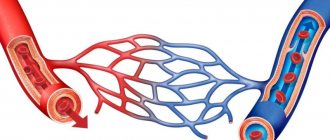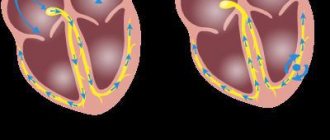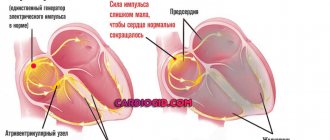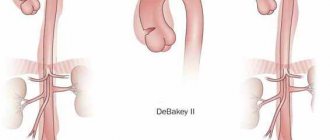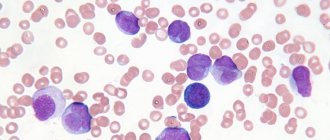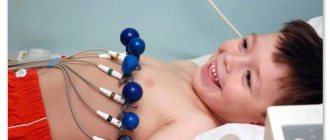Nausea is an unpleasant feeling in the stomach, manifested by the urge to vomit, which can develop into. If nausea is a reaction to a food or toxic substance consumed, it is usually not recommended to suppress it - it is better to get rid of the unwanted stomach contents, preventing them from affecting the body. In most other cases, suppressing an unpleasant symptom is advisable. If nausea persists for more than a few days, is accompanied by intense headache, abdominal pain, dizziness, vomiting, consult a specialist - these signs may indicate the presence of a disease. Let's look at what dizziness and nausea mean at normal blood pressure - the causes and ways to eliminate the problem.
Brain hypoxia
In simple terms, hypoxia means oxygen starvation. The pathological process is often found among residents of large dusty cities, as well as people working in close quarters with poor ventilation. The reason is also a sharp rise to a significant altitude, blockage of the respiratory tract, and carbon monoxide poisoning.
Hypoxia is characterized by the following symptoms:
- drowsiness that does not go away even after a full night's sleep;
- headache;
- deterioration of memory and thinking abilities;
- absent-minded attention;
- yawn;
- tachycardia;
- cold sweat;
- rapid breathing;
- pallor;
- nausea;
- in severe cases, loss of consciousness is possible.
Oxygen deprivation causes dizziness and nausea
Signs of oxygen deprivation can be caused by stressful situations. Experts note that smokers, as well as people who abuse alcohol, are at risk. Acute hypoxia causes active stimulation of the entire nervous system.
After this, its depression occurs, manifested in the form of drowsiness, depression of consciousness, darkening of the eyes, general lethargy and stupor. The consequences of hypoxia are quite serious, ranging from bronchial asthma and metabolic disorders, ending with the development of acute cerebrovascular accident - stroke.
The following simple tips will help prevent hypoxia:
- walks in the open air. Experts recommend walking in a park or forest a few hours before going to bed. If this is not possible, skip the minibus after work and go for a walk instead;
- regular physical activity. Experts say that playing sports speeds up blood circulation in the body. Experts assure that the benefits of training will be maximum if they are carried out in the fresh air;
- correct daily routine. You should set aside enough time for proper sleep and rest;
- ventilation of the room;
- minimizing stressful situations. As they say, if you cannot change a situation, change your attitude towards it. The attitude with which you live plays a big role;
- proper diet. The food consumed should be balanced and fortified.
Walking in the fresh air will help prevent oxygen starvation. Treatment of cerebral hypoxia includes a whole range of therapeutic measures. Patients are prescribed herbal medicines that help accelerate blood circulation and normalize the condition. Hyperbaric oxygen therapy may be used as an additional treatment.
Headache and nausea
The essence of the procedure is that a person is placed in a special chamber where oxygen is supplied under high pressure. Breathing exercises give good results. If you notice signs of oxygen starvation, but you don’t have time for walking or playing sports, try some exercises.
Take a deep breath, then hold your breath and exhale slowly. It is necessary to do ten such repetitions. Gradually, the time of inhalation and exhalation must be increased. Take a deep breath and then try to exhale all the air from your lungs. Take a deep breath, and then take seven short exhalations through your nose, while keeping your mouth closed.
It is necessary to do several repetitions, after which it is important to rest a little.
It's also worth talking about emergency care. In case of acute hypoxia, immediately call an ambulance. Before the specialist arrives, completely unbutton your clothes, ventilate the room and provide access to fresh air. If necessary, perform chest compressions and artificial respiration.
About the types of vertigo
Our ability to move in a coordinated manner is influenced by the following factors:
- Eyes - show the position of a person relative to other objects;
- Limb receptors - they have the same role as the eyes;
- Vestibular apparatus - with the help of it we correctly respond to the speed of change in the body and its position in a certain place;
These 3 components send basic data to the brain, thanks to which we can maintain balance and simply understand where we are.
If there are problems with the transfer of information from at least one source, the picture of the world we perceive is greatly distorted, we may lose our balance or stop distinguishing between objects.
True vertigo
If you have true vertigo, then even with normal blood pressure, women may simply lose their balance; this is the main sign of true vertigo.
Vertigo appears because completely different data about the world around us comes to the brain from the eyes and the musculoskeletal system. The best way to describe vertigo is when you fall to the ground after “flying” on fast carousels.
There are several types of vertigo:
- Central - unpleasant sensations appear over time, as soon as the patient’s condition becomes worse, its causes may be constant fatigue, diabetes, stress, anemia, encephalopathy, migraine, sclerosis, cancer and epilepsy. However, there are no problems with hearing, a lot of sweating, tachycardia, there are no “midges” before the eyes, but you feel a quick fainting, weakness and a sudden sleepiness;
- Peripheral - long-term dizziness, can last more than 1 day, hearing problems appear, tachycardia, increased sweating, vomiting, blood pressure, however, remains normal. The causes of such vertigo are problems with blood circulation, sudden loss of vision, various inflammatory processes, ear injuries; You need to know that peripheral vertigo is one of the indicators that you may have Meniere's disease.
The most effective nootropics for improving brain activity
False vertigo
With false vertigo, the head also feels dizzy, but this is more like the consequences of intoxication (this is called lipotomy). In this condition, a lot of sweat is released, tachycardia, pallor, nausea, and blurred vision appear.
This vertigo gets its name not because it exists in reality, but because the patient feels it due to the symptoms that appear. Lipotomy occurs due to damage to the brain and central nervous system, as well as due to low sugar levels, too viscous blood, anemia, myopia, neuroses and depression.
You need to know that false vertigo can appear in women who are pregnant, who are currently experiencing PMS or menopause, and its appearance is also influenced by other reasons associated with changes in hormonal levels.
BPPV
These 4 letters can be deciphered as “benign paroxysmal positional vertigo” . It does not last long, from about a few seconds to 1 minute; it can only be felt in certain head positions, for example, with the head thrown back. BPPV occurs due to damage to the inner ear; it can occur due to infection, inflammation or injury.
Previously, this problem was found only in older people, but now it can easily be diagnosed in a teenager.
FACT! Women who smoke may experience vertigo due to the fact that they are taking birth control pills, and vertigo also most often occurs due to the use of strict diets.
But in any case, you should consult a doctor, even if you think the problem is not serious, it’s not worth risking your health.
Panic attack
A panic attack is an uncontrollable attack of anxiety. The pathological process threatens the development of serious mental problems. The pathological condition is accompanied by pronounced clinical symptoms. Sometimes patients even confuse the condition with a heart attack.
During a panic attack, you feel very dizzy
So, let's highlight the characteristic features:
- chills;
- shiver;
- tachycardia;
- hot flashes;
- sweating;
- suffocation;
- dyspnea;
- pain in the left side of the chest;
- abdominal pain;
- attack of nausea and urge to vomit;
- urinary disturbance;
- constipation or diarrhea;
- dizziness, lightheadedness.
Patients may develop an uncontrollable fear of death. They may be troubled by insomnia and nightmares. It is difficult for patients to think soberly, their consciousness is confused. The attack usually lasts from fifteen minutes to half an hour. Some people have a panic attack once a month, and sometimes much more often - two or three times a day.
During a panic attack, a person has an obsessive fear of going crazy. Genetic predisposition plays a major role in the occurrence of the disease. A person is at risk if one of his close relatives has been diagnosed with a mental disorder. It is not for nothing that they say that all problems have their roots in childhood.
Indeed, upbringing and family conditions leave a big imprint on the rest of your life. A panic attack may occur in a person whose parents were overly demanding and critical. The personal characteristics of a person also play an important role. Suspiciousness, impressionability, vulnerability - all this can subsequently result in a panic attack.
Treatment necessarily includes a consultation with a psychotherapist. Psychotherapy will help to influence the very cause of the pathological condition. As for drug treatment, it will help relieve the symptoms of the disease. Patients may be prescribed tranquilizers, antidepressants, and B vitamins.
Diagnostics
The complaint of dizziness prompts men to look for reasons in their state of health. For this, the patient is interviewed and examined. During the conversation, you need to provide the doctor with information about the factors that precede the deterioration of the condition, its duration, and methods of making you feel better. It is important for a specialist to understand what type of headache accompanies dizziness - it has a sharp, increasing character, can manifest as pulsation or be without precise localization.
In all cases of seeking medical help, a man is prescribed to undergo examination:
- Laboratory diagnostics. Includes biochemical, clinical, bacteriological blood analysis.
- X-ray examination of the spine.
- MRI or CT. Each method is used to clarify the characteristics of previously identified violations.
- If a tumor is detected, a biopsy is performed followed by histological analysis. The study allows you to determine the nature of the neoplasm - benign or malignant.
The doctor may prescribe additional types of research if necessary to obtain more complete information about the patient’s health status.
Meteor dependence
Weather sensitivity is an increased response to changes in weather conditions. Fog, wind, magnetic storms, solar flares - all this can cause a disturbance in the general condition. Women are more susceptible to weather dependence.
Changing weather conditions provoke headaches, dizziness and even nausea
Experts distinguish five main types of meteosensitivity:
- Cordial. It is characterized by the appearance of heart pain, a feeling of lack of air, an increase in respiratory rate, arrhythmia, tachycardia or bradycardia.
- Cerebral. Headaches, dizziness, tinnitus, and stars before the eyes appear.
- Astheno-neurotic. It most often occurs in people with existing neurological problems. This type is characterized by the following symptoms: weakness, decreased performance, irritability, and depression.
- Mixed. It is a combination of symptoms from the nervous and cardiovascular systems: tachycardia, nervousness, fatigue, lack of air.
- Uncertain. It is characterized by general weakness, lethargy, weakness, as well as aches in the joints and muscles.
Cervical osteochondrosis
Due to the anatomical features of the cervical spine, osteochondrosis most often appears in this section. The canal, which is formed by the processes of the cervical vertebrae, contains the vertebral artery, which provides blood supply to many structures of the brain. Narrowing of the vertebral artery may be the result of a reflex spasm or mechanical compression.
When vertebral artery syndrome develops, the following symptoms appear: aching headaches that intensify when turning the head, the scalp begins to ache even with light touches, dizziness, imbalance, hearing impairment, ringing in the ears, darkening in the eyes, the appearance of spots, insomnia, irritability, fever, chills.
Root compression also causes a variety of symptoms. Patient complaints may differ depending on which root is damaged:
- C1 – pain in the parietal region, numbness, decreased sensitivity, tingling of the skin;
- C2 – pain and loss of sensitivity in the parieto-occipital region;
- C3 – pain in the neck. Difficulty in moving the tongue and speech impairment also occur;
- C4 – pain and changes in sensitivity in the clavicle area. There may also be breathing problems and pain in the heart area;
- C5 – characteristic pain in the shoulder;
- C6 – pain spreads from the neck to the shoulder blade, shoulder, forearm and thumb;
- C7 – pain from the cervical area spreads under the shoulder blade, shoulder and forearm;
- C8 – pain in the neck, which goes down to the little finger of the hand, bothers me.
Cervical osteochondrosis can cause severe dizziness and nausea
Cervical osteochondrosis is also characterized by the appearance of reflex syndromes:
- Cervicalgia. Aching pain in the neck in the morning, which intensifies when turning the head, coughing and even laughing;
- Cervicocranialgia. The pain is localized in the neck and back of the head.
- Cervicobrachialgia. Pain appears in the neck, shoulder and forearm.
Treatment of osteochondrosis is a labor-intensive process that includes massage, gymnastics, physiotherapy, drug therapy and the use of folk recipes. Wearing a cervical collar will help relieve muscle tension and give the spine the correct position. This device will help relieve compression of the vertebral artery and nerve roots.
A cervical collar will help in the treatment of cervical osteochondrosis.
Anemia
Anemia is characterized by an insufficient number of red blood cells and low hemoglobin levels. Red blood cells and hemoglobin are involved in the transport of oxygen, so with anemia, the ability of the blood to saturate tissues with oxygen decreases. There can be many reasons for anemia: lack of iron, folic acid, blood loss, disruption of internal organs, intoxication, stomach diseases, hemorrhoids and much more.
Let us highlight the general symptoms of the pathological process:
- dizziness;
- nausea;
- fainting;
- tachycardia;
- weakness;
- increased fatigue;
- dyspnea;
- pale skin.
Patient complaints of dizziness, weakness, nausea may lead the doctor to think about low hemoglobin
Physiological factors that provoke dizziness
Dizziness with normal blood pressure is usually a temporary symptom. The reasons are the following non-hazardous factors:
- atmospheric phenomena. Sudden changes occurring in the atmosphere;
- nasal congestion;
- women feel dizzy during pregnancy;
- increased physical activity;
- emotional overstrain;
- sleep disorders;
- due to bad habits;
- uncomfortable body position;
- insufficient amount of iron in tissues;
- lack of vitamins;
- dehydration. If you don't drink water for a long time.
It is possible to determine the exact reasons why you feel dizzy when your blood pressure is normal only after a diagnostic examination.
Hypoglycemia
Glucose is the most important source of energy in our body. To the surprise of many, it is found not only in sweet foods. Even potatoes and bread are sources of glucose. Hypoglycemia is a sharp drop in glucose levels, which leads to energy starvation of the body. Because of this, the cells of the body, including the brain, cannot function normally.
In healthy people, hypoglycemia can develop as a result of fasting. Excessive consumption of carbohydrates can also provoke a drop in glucose. Hypoglycemia often occurs in diabetics. The reason for this may be uncontrolled use of drugs that lower blood sugar levels. Alcohol poisoning is another factor in the occurrence of hypoglycemia. This is due to the fact that the liver directs all its forces to cleanse the body of toxic substances.
During prolonged physical activity, intense waste of energy occurs. Glucose levels also often fluctuate in pregnant women. The development of hypoglycemia can be suspected by the following signs: sweating, chronic fatigue, drowsiness, constant feeling of hunger, nausea, dizziness, lack of coordination, anxiety, restlessness.
So, dizziness and nausea can occur for a variety of reasons. Sometimes they are a variant of the norm and occur when motion sickness or rising to a height. Unfortunately, in many cases, the appearance of these symptoms is associated with the occurrence of dangerous diseases: anemia, hypoglycemia, panic attack, oxygen starvation of the brain, cervical osteochondrosis.
We have looked at only a few reasons, but there are many more. Treatment largely depends on the provoking factor. Only after an accurate diagnosis can you begin treatment therapy. Self-medication can seriously harm you, so contact a qualified professional.
Treatment
Dizziness may come on suddenly and you may lose your balance and fall, injuring your head or other parts of your body. If you feel dizzy, quickly find a place to sit, close your eyes, and it will go away faster. This is if you are indoors, and if you are outdoors, you can lean on the building to avoid falling.
There is no special treatment for dizziness; usually the primary signs of the pathology are treated, after which the “vertigo” disappears:
- Constant dizziness , due to age, is treated according to symptoms.
- To treat problems caused by diseases of the vestibular apparatus, vestibulolytic agents are used . Antihistamines, sedatives, and tranquilizers are also prescribed.
- Metoclopramide will save you from nausea and will also help you from vomiting.
- Betahistine is also prescribed ; it stimulates blood flow in the inner ear.
Sometimes correcting your lifestyle, eating right and healthy sleep, as well as getting rid of smoking and alcohol, can eliminate your dizziness for a long period of time.
21.09.2016

